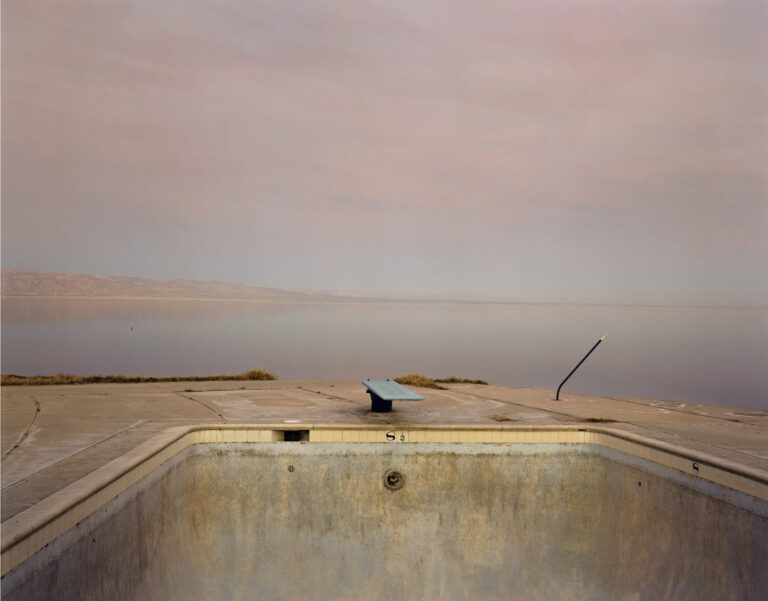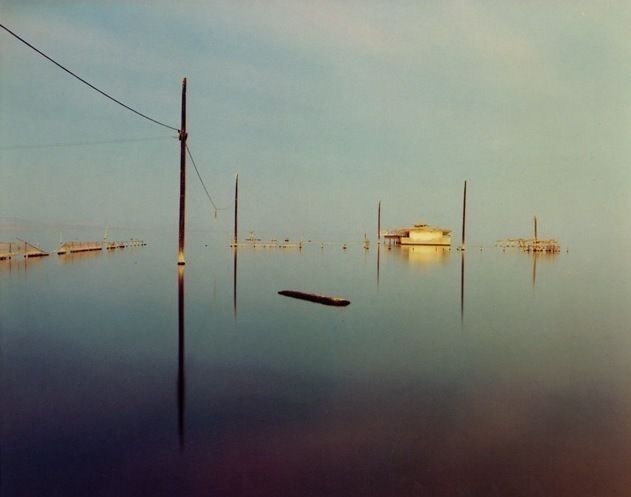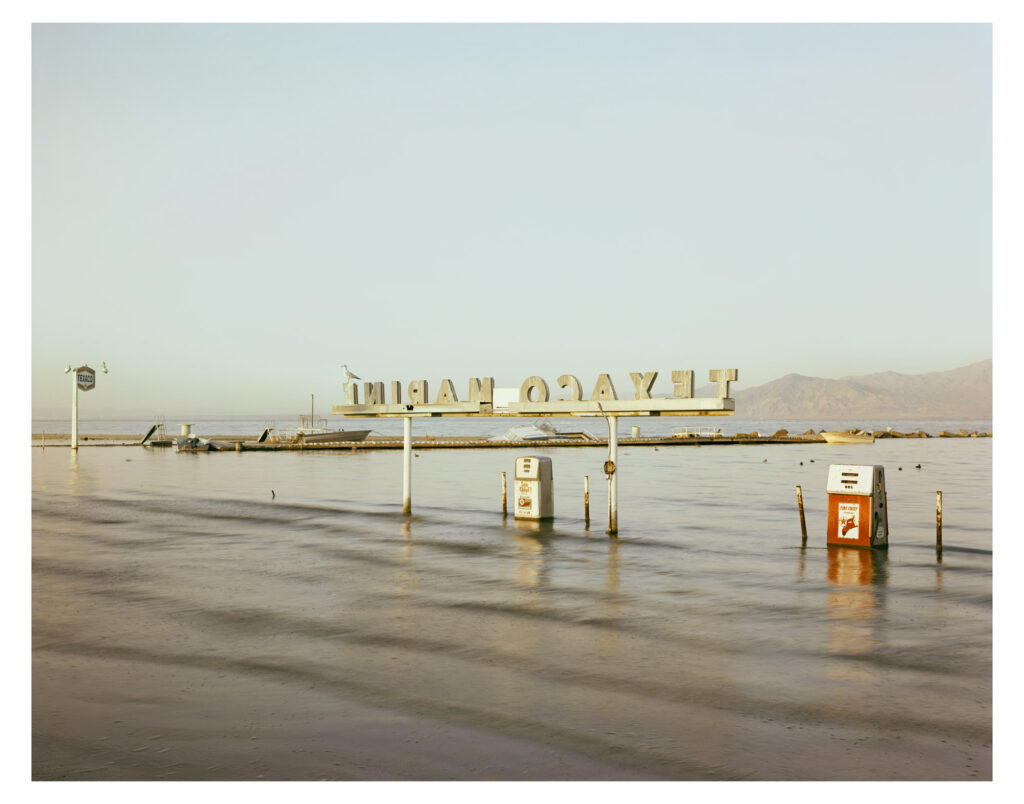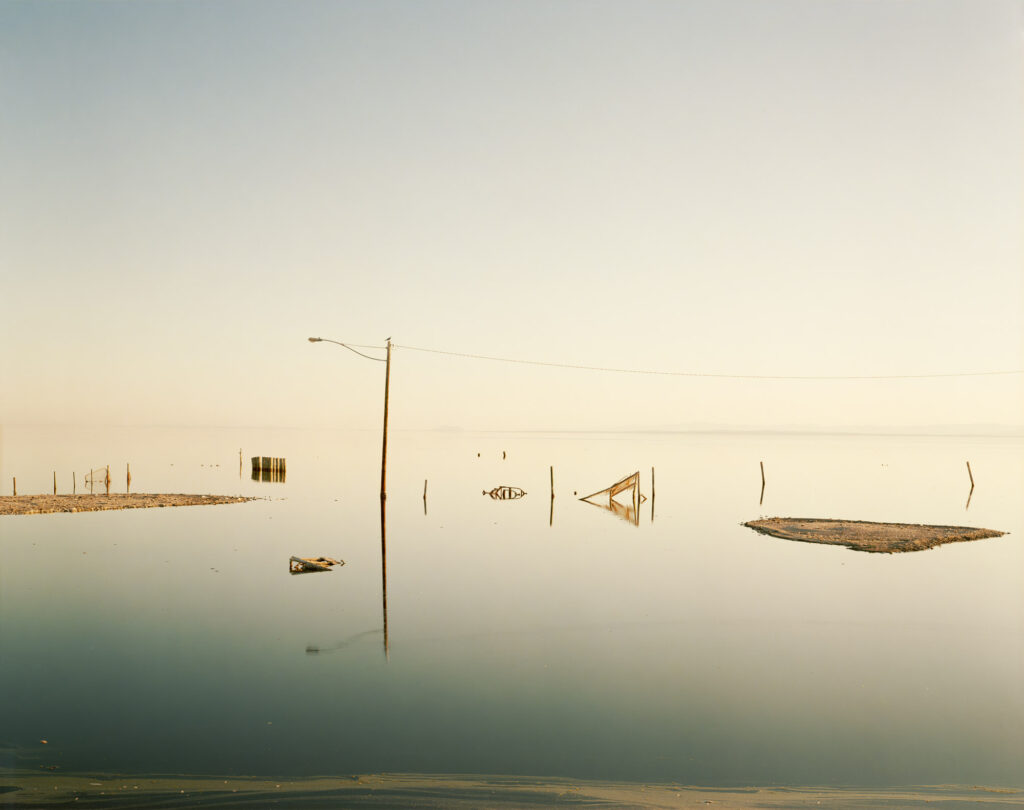
The official categorization of this magazine is “Science Fiction and Fantasy,” but that’s just a work-around. What really interests us is what the Surrealists called le merveilleux. In Breton’s words, “the marvelous is always beautiful, anything marvelous is beautiful, in fact only the marvelous is beautiful.”
I would add that the beautiful is always marvelous, and especially so when it surfaces in the seemingly ordinary, and nothing reveals this like the camera. As Muybridge showed the invisible worlds hidden in motion, and Winogrand the beautiful human innerness of busy life in public places, Richard Misrach shows us the invisible content of emptiness, as observed in desert spaces. Though he routinely achieves great beauty, his real concern is with the sublime.
I am here following Kant, who distinguishes several types of aesthetic pleasure. By his account, beauty is found where things cohere in an order that seems to us meaningful, as when, in a poem, the rhyming words enclose an idea in a way that seems to us almost fated: the very shape and sound of the words seem to tend to exactly this end.
Kant called the sublime that which produces in us a cooler, rational delight when we see something whose vastness we can grasp without being able to fully picture it (like a galaxy) or whose power we can grasp without being able to control it (like an avalanche).

In his Desert Cantos, Misrach engages vastness in enormous prospects bounded only by a horizon, and that horizon indicates the limit of what we can see, not of what is there. And Misrach engages power, in all its ambivalent splendor, by choosing scenes of desert catastrophe, whether natural, such as fires, or man-made, as in crimes against ecology.
Misrach himself may be surprised to learn that a titan of continental philosophy must be pressed into the service to fathom his camera work. In his own fascinating and candid account, On Landscape and Meaning, he suggests that his conscious agenda was one of ecological concern, his practice was one of naive aesthetic experimentation, in which, as Pasteur put it, “chance favors the prepared mind.”
I am discussing only one aspect of Misrach’s more than half century of work, in which he has used the camera to explore politics, eco-catastrophe, and even physics (in his night photography.) He has ranged with the ambition of a conquistador from 35 millimeter to large format to digital photography, from black and white to color to computer manipulation of images. His work has as many facets as a disco mirror ball, from which I have chosen only one. I offer a few curated personal perceptions, not a reduction or summation of his vision.

These are landscapes, with all that that implies. We should take a moment to ponder those implications, since the idea of the beautiful landscape has become so instinctual for us that we forget how recent an innovation it is. It was only in the early 18th century, in the days of Washington and Voltaire, that religion lost all credibility in educated European society and the worship of nature took its place. Landscape painting rapidly assumed its present rank, and heroic scenes from history or mythology began their slow but irreversible fall from favor.
And it was photography that finally put paid to landscape painting. Photos like Anselm Adams’ vistas of the American West, black and white though they were, made oil portraits of mountain ranges irrelevant, because photography (apparently) served up venerated nature au naturel. The painter’s best efforts seemed less authentic.
Even in its final Impressionist form, when shape and outline were devalued in favor of the play of light, landscape painting was no match for the camera. Monet’s dictum, “light is the principle person in the picture,” was the unintended death knell of the genre. As etymology announces, photographs are “drawn by light itself.” Light had become not only the subject but the painter as well.
As the successor to landscape painting, it was inevitable that photography would tend towards the painterly, and this is the case with Misrach and many of his predecessors. The Fires and Clouds photos from the Desert Cantos call to mind Turner’s mastery of the fleeting effects of misty light. (We do not reproduce an example here. A 30 by 40 inch print, made from a large view camera’s 8 by 10 piece of film holding as much data as thirty-six 35mm negatives, does not translate well into a website’s lossy jpeg.)

As noted above, the love of landscape is a corollary of venerating nature, and the roots of Misrach’s Rousseau-like identification with nature go very deep. His first series, Telegraph 3 A.M., documented the drugged-out, penniless flower children. Whether one reads their beards and wire-framed glasses as a longing for the agrarian 19th century, or reckons their beads and ill-digested occultism as a yearning for the primordial wisdom of the saddhus they so much resembled, they testify to a faith that a blessed, Adamic state of nature could be recovered even now.
In the desert cactus and jungle pictures which followed, Misrach shot at night, using hours-long exposures to register the minimal light, and a hand-held strobe to selectively illuminate plants, making it seem as though they glowed with an inner light. These icon-like images of plants which have become their own halos, are a hagiography of nature.
With the Desert Cantos, Misrach discovered his own definitive vision. Nowhere is this more apparent than in the Salton Sea series.
The Salton Sea was formed, early in the last century, in lowland not far from Palm Beach, as the result of a botched attempt to irrigate with water diverted from the Colorado River. The accidentally created lake became a tourist destination in the mid twentieth century, but has now dried into an ever diminishing sink of toxic brine.
Violent storms in the 1970’s, and calculated mismanagement of rainfall runoff by irrigation companies, submerged this tourist paradise. Misrach immortalized this temporary California Kitezh in the 1980’s.
In the medieval Russian legend, God submerged Kitezh in Lake Svetloyar to save it from the invading Mongols. The way to this hidden city can now be found only by the pure of heart. Pious individuals sometimes see the lights of religious processions and buildings at the bottom of Lake Svetloyar, or hear the bells of its sunken churches, &c.
The point of this excursus into Russian folklore is to suggest the archetypal dimension implicit in these pictures. A more familiar European version is the Celtic legend of the sunk city of Lyonesse, decadently expressed by Walter de la Mare,
In sea-cold Lyonesse,
When the Sabbath eve shafts down
On the roofs, walls, belfries
Of the foundered town,
The Nereids pluck their lyres
Where the green translucency beats,
And with motionless eyes at gaze
Make minstrelsy in the streets.
Examples of this could be greatly multiplied, but what is at stake here is the symbolism of the Center, the place where the various levels of existence interpenetrate. Cities participate in this symbolism. Rome, Jerusalem and Mecca are obvious instances of the ease with which an urban center becomes a cosmic one. In the legends of Lyonesse or Kitezh, the implications of the “holy city” take on visual, rather than theological form, with water as metaphor for the power to renew existence.
In the lost (tourist) paradise of the Salton Sea resort, some of this otherworldiness in at play, just below the level of conscious awareness, infusing the images with mystical glamor.
